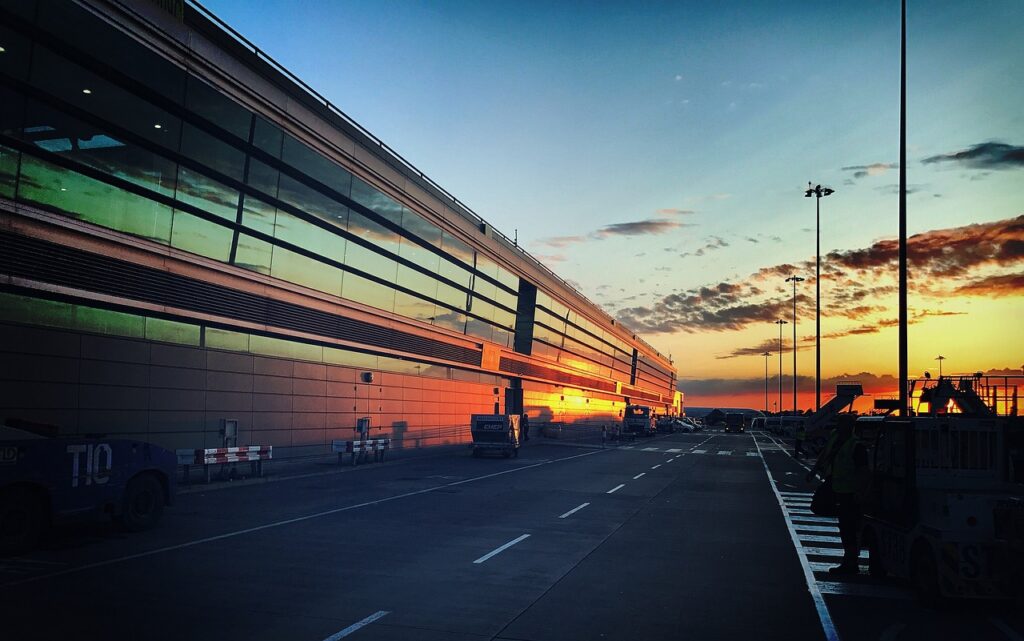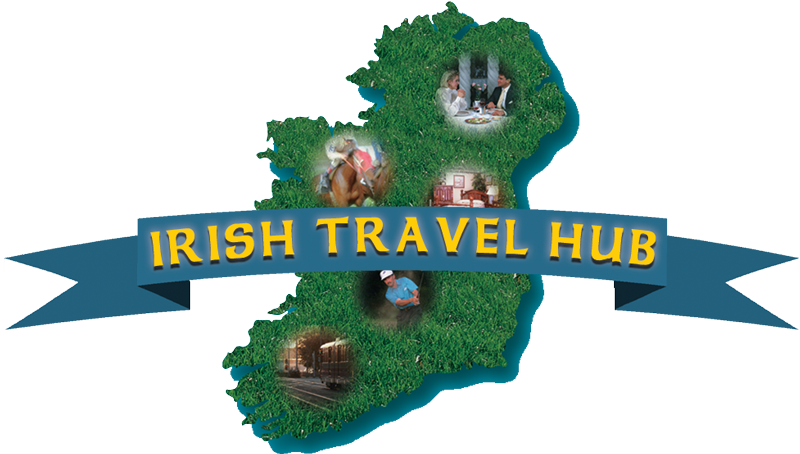Transportation In Ireland


There are several ways to travel in Ireland, including by car, bus, train, and plane.
BY CAR
Renting a car is a popular option for those who want to explore the country at their own pace and see more of the countryside. Some things to keep in mind while driving around Ireland are as follows:
- Drive on the left side of the road.
- Seat belts are mandatory.
- Speed limits are in km/h.
- Drink driving is illegal.
- Roundabouts are common, give way to traffic on the right.
- Many narrow roads and bridges, take care when driving.
- Have an international driver’s license if not from EU.
- Insurance, registration, and regular vehicle maintenance is required.
- Take note of road signs and traffic regulations.
- Use of mobile phones while driving is prohibited.
BY BUS
Bus Eireann is the main national bus company, with routes connecting major cities and towns. Bus travel is a popular way to get around in Ireland. Here are some tips for bus travel in Ireland:
- Plan your journey: Use websites like Expressway.ie or Dublinbus.ie to plan your route and check the schedule.
- Buy a ticket: You can buy a bus ticket onboard or in advance from the bus driver, at a ticket office or online.
- Have correct change: Many buses do not accept card payments, so it’s a good idea to carry correct change in cash.
- Check baggage limit: Bus companies in Ireland have different baggage allowances, so make sure to check this before boarding.
- Know your stop: Make sure to ask the bus driver or check the bus stop announcement to know when your stop is coming up.
- Be mindful of peak times: Buses can be busy during peak hours, so plan accordingly and arrive at the bus stop early.
- Respect local customs: Observe local customs and be mindful of other passengers on the bus, such as giving up your seat to elderly or disabled passengers.
Website: buseireann.ie
BY TRAIN
Traveling by train in Ireland can be a convenient and scenic way to see the country. The main operator of railway services in Ireland is Irish Rail. Services include intercity trains between major cities, as well as regional trains in certain areas. Some popular destinations for train travel in Ireland include Dublin, Cork, Galway, and Limerick. Some train services offer scenic routes with views of the coast and countryside. Before traveling, it’s recommended to check schedules and prices on the Irish Rail website or mobile app and book tickets in advance to secure a seat. Here are some tips for train travel in Ireland:
- Book tickets in advance to secure a seat and avoid paying higher prices.
- Check the schedule ahead of time and plan for any potential disruptions.
- Familiarize yourself with the train station, including platform information.
- Pack light and bring only what you need for the journey.
- Purchase refreshments before boarding as food and drinks on trains can be expensive.
- Have proper identification ready, as tickets are checked regularly.
- Use the luggage storage facilities if needed, keeping valuable items with you.
- Take advantage of Wi-Fi and charging ports on board.
- Respect fellow passengers and avoid loud conversations or phone usage.
- Plan your disembarkation, know the location of your destination and how to get there.
Website: irishrail.ie
BY PLANE
The main airport in Ireland is Dublin Airport (DUB). Other significant airports include Cork Airport (ORK), Shannon Airport (SNN), and Knock Airport (NOC). Airlines that operate in Ireland include Aer Lingus, Ryanair, and easyJet, among others. These airlines offer both domestic and international flights. When traveling by plane in Ireland, it’s recommended to book flights in advance, arrive at the airport well before your flight’s departure time, and bring a valid form of identification (such as a passport).
- Book in advance: Book your flights early to get the best deals and ensure you have a seat.
- Arrive early: Arrive at the airport at least two hours before your flight to allow time for check-in, security, and baggage handling.
- ID requirements: Bring a valid form of identification such as a passport, especially for international flights.
- Familiarize with airport security: Be familiar with the airport’s security and baggage policies to avoid any delays.
- Pack smart: Pack only what you need and follow the airline’s baggage restrictions to avoid paying extra fees.
- Get travel insurance: Purchase travel insurance to protect yourself against unexpected events such as flight cancellations or lost luggage.
- Use public transportation: Use public transportation, such as buses and trains, to reach the airport and save on parking costs.
- Stay informed: Stay informed about flight status and any changes by checking the airline’s website or contacting customer service.
- Relax: Relax, stay calm, and enjoy your flight!
BY BICYCLE
Cycling in Ireland is a popular activity due to the country’s scenic routes and relatively mild climate. Here are some things to consider when planning a bicycle trip in Ireland:
- Choose the right route: Ireland has several scenic cycling routes, such as the Wild Atlantic Way and the Greenway.
- Plan your accommodation: There are many Bed and Breakfasts, hostels, and campsites that cater to cyclists in Ireland.
- Pack appropriately: A waterproof jacket and pants, a helmet, and comfortable clothing suitable for layering are essential items.
- Prepare for the weather: Ireland’s weather can be unpredictable, so it’s important to be prepared for rain, wind, and cold temperatures.
- Be aware of road conditions: Ireland’s roads can be narrow and winding, so it’s important to be cautious when cycling.
- Take necessary safety precautions: Always wear a helmet, carry a repair kit, and bring a map or GPS device.
- Respect local communities: Follow traffic laws and be respectful of local residents and wildlife.
HIKING/WALKING
Walking in Ireland is a popular activity due to the country’s scenic landscapes and trails. Here are some tips for walking in Ireland:
- Choose the right trail: Ireland has several well-marked trails, such as the Wicklow Way and the Dingle Way, that offer breathtaking scenery and cultural experiences.
- Wear appropriate footwear: Good walking shoes or boots with good grip are essential for Ireland’s often wet and uneven terrain.
- Pack appropriately: Waterproof clothing, a hat and sunglasses, a map, and a compass are essential items for any walk in Ireland.
- Prepare for the weather: Ireland’s weather can be unpredictable, so be prepared for rain, wind, and cold temperatures.
- Respect the environment: Follow the “leave no trace” principle and stick to marked trails to minimize your impact on the environment.
- Know your limits: Ireland’s hills and mountains can be challenging, so it’s important to know your physical limitations and choose walks that are appropriate for your fitness level.
- Be aware of safety risks: Be cautious of slippery rocks and steep cliffs, and be prepared for sudden changes in weather.
- Plan ahead: Make sure you have a good map, compass, and know the route before setting off on any walk.
Some popular hiking destinations in Ireland include:
- The Wicklow Way: A 129 km (80 mi) long-distance trail that runs through the Wicklow Mountains and the countryside south of Dublin.
- The Wild Atlantic Way: A 2,500 km (1,500 mi) coastal route that runs along the west coast of Ireland, offering stunning views of the Atlantic Ocean and the cliffs of Moher.
- The Mourne Mountains: A range of mountains in County Down, Northern Ireland, known for their rugged beauty and scenic walks.
- The Beara Way: A scenic coastal hiking trail in West Cork, taking in the rugged coastline and unspoiled landscapes of the Beara Peninsula.
- The Great Western Greenway: A 42 km long-distance walking and cycling trail in County Mayo, along the former Westport to Achill railway line
- The Ring of Kerry: A 180 km circular route around the Iveragh Peninsula in County Kerry, with breathtaking views of the rugged coastline, mountains and lakes. (Read “Hiking the Ring of Kerry”)
- The Cliffs of Moher Coastal Walk: A scenic coastal trail in County Clare, taking in the dramatic Cliffs of Moher and the surrounding countryside.
Croagh Patrick: Also known as “The Reek”, is a mountain located in County Mayo. It is considered one of the most important pilgrimage sites in Ireland, with thousands of people climbing it every year, particularly on the last Sunday in July, known as Reek Sunday. (Read “A Hike Up The Reek – My Croagh Patrick Experience”)
